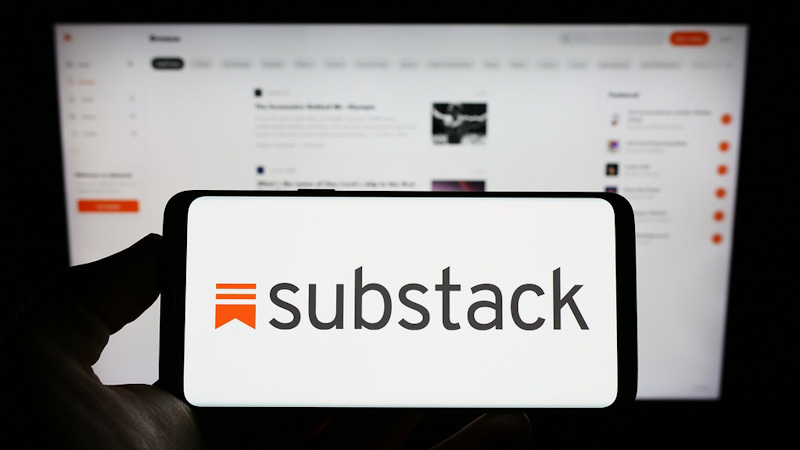How lawyers can use Substack to generate business

“It generates a return of investment in terms of marketing and branding,” says Jordan Furlong, a nonpracticing attorney, an author and principal at Law21, a legal consultation practice. “By writing, I reach the widest possible audience." (Image from Shutterstock)
In between counseling legal organizations and forecasting law firm trends, Jordan Furlong recently penned a few pieces that he popped onto Substack, an online writing platform.
Within days of posting, the Ottawa, Ontario-based nonpracticing attorney, author of Law Is a Buyer’s Market: Building A Client-First Law Firm and principal at Law21—a legal consultation practice—had received calls from a few firms—one Am Law 200 firm plus a few small and midsize firms, which turned into full-blown speaking and consulting gigs.
Founded in 2017, Substack, which is a publishing platform open to anyone and everyone who has something to write, has recently attracted a slew of lawyers and attorney-adjacent writers who realized how much it could help their careers.
It’s free to publish your newsletter-type post or blog on the site, and you may choose whether you want to charge a minimal fee for others to read your Substack.
According to Substack, paying newsletter subscribers represent 5% to 10% of the total readership. For example, some of the really popular Substacks, such as Heather Cox Richardson’s Letters From an American, charge upward of $5 per month for readers, of which Substack takes 10%). Substack currently has more than 35 million active monthly subscriptions and 2 million paid subscriptions.
Furlong doesn’t charge a subscription fee for his self-titled Substack, and he doesn’t plan on doing so in the near future. But he says the eight to 10 hours per newsletter that he writes pays back in dividends, and he’s even done a cost-benefit analysis.
“It generates a return of investment in terms of marketing and branding,” Furlong says. “By writing, I reach the widest possible audience, and some of them seek me out for consulting and speaking,” adding that while he doesn’t know exactly how much business that he generated specifically from Substack, it appears to have led to at least a handful of gigs so far.
While there are no official stats detailing the number of lawyers on the site, it appears from search results to be populated with hundreds of attorneys attempting to spread the word about everything from the practice of law to startup law tips and more.
Glenn Greenwald, a former litigator, a Pulitzer Prize-winning reporter and an author of several books, has thousands of paid subscribers, while others can earn even more. A few of the top earners, who write about everything from conspiracy theories to history to politics, earn upward of $1 million annually from their Substack, according to the site and the Press Gazette.
Steven Peskind, principal at the Peskind Law Firm in suburban Chicago, spends about one to two hours per week on his Substack, called The Successful Lawyer, and doesn’t charge a fee to read his work.
“There may be some intangible kickbacks as a result of me building a brand of being an expert and being highly regarded in terms of complex family law matters,” Peskind says. “It’s also helping me build relationships with other members of the bar.”
When Peskind posts anything, he solicits comments; sometimes this turns into an email discussion with readers, which could lead to a referral, he says.
Vivia Chen, a former legal columnist and a writer for various legal publications, recently started a Substack called The Ex-Careerist focused on BigLaw.
She left her previous position at Bloomberg Law after going through a public depression. But Chen says she still felt the urge to write with the freedom to say whatever she wanted now. Eventually, she wants to monetize her Substack. But at the moment, she says she’s trying to get a critical mass of readers and reestablish her credibility, so that readers will see her worth.
What to know before starting your Substack
While you can technically write on any topic with any opinion on the matter, be certain that you’d be comfortable having anything that you write placed in front of a court, a client or an opponent, says Mitchell Epner, a member of Rottenberg Lipman Rich in New York, who spends up to three hours per week on his complimentary Substack, Mitchell Epner on Law.
“I’m extraordinarily careful, but I’ve seen it happen to others,” says Epner, referring to celebrities who have been targeted for their social media and online musings. “I never put anything into a Substack or on social media that I wouldn’t feel comfortable defending in court.”
And if you really want to be successful and possibly monetize your Substack, it’s key to focus on a specific niche, Furlong says. There are plenty of people writing in general about the practice of law, about the top legal decisions and about legal artificial intelligence in general. So readers would need a reason to take the time—and possibly even pay—to read your words.
“You don’t need to have a wide readership. If you have a narrow band of really interested people who will get in touch with you because you’re clearly informed, and they will hire you as a witness or as a speaker, that’s great,” Furlong says. “My newsletter has been instrumental in bringing in business.”



